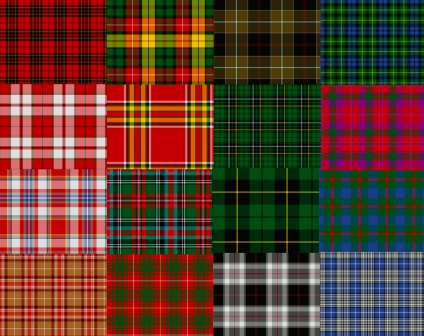It’s Tartan Time

I’ve said it before, but it’s worth repeating: if there’s a holiday for something, no matter how obscure it is, we’re probably really excited about it around the UNC Press office. Back in February, you saw how much work we put into National Chili Day. We love reasons to celebrate.
There’s just as much excitement right now because we’re smack dab in the middle of Tartan Week, a 7-day festival of Scottish heritage, including National Tartan Day each April 6th. Around the world, Scottish diaspora get together to hear pipe bands and watch Highland games-style competitions. In New York City, they’ll be holding the 12th annual New York Tartan Week Parade–they even have a countdown on their website.
And throughout–from the bands to the sports to the parade–the common thread (ha) is the tartan. In Highland Heritage: Scottish Americans in the American South, author Celeste Ray writes at length about the most identifiably Scottish pattern, and its relationship to the kilt, saying that for part of the 18th century, the British government saw the tartan and the kilt as a form of Scottish resistance. The wearing of either in Scotland could mean jail time for the offender. Only once Britain realized Scottish participation was necessary for its military to succeed overseas did they warm to the tartan–eventually using it as a recruiting tool and making it the official uniform for regiments from Scotland, a symbol of loyalty to the Empire.

The idea of a tartan parade, like the one held tomorrow in New York, actually have their foundations in America instead of the British Isles. The first Parade of Tartans took place at North Carolina’s Grandfather Mountain Games in 1965, inspired by the colorful parades of New Orleans. Now, some tartan parades even have judges who award the most stylish and accessorized clans in the parade the distinction of leading the following year’s procession.
Besides Celeste Ray’s informative Highland Heritage, UNC Press has published a number of celebrated books on Scottish culture and history, including James G. Leyburn’s The Scotch Irish: A Social History, Duane Meyer’s The Highland Scots of North Carolina, 1732-1776, and the sixth volume of The New Encyclopedia of Southern Culture: Ethnicity, which was also edited by Celeste Ray. So once you’ve picked out your tartan of choice and proudly paraded through the streets tomorrow, go the extra step and learn the long and intricate story of Scotland’s famous symbol.
–Matt
